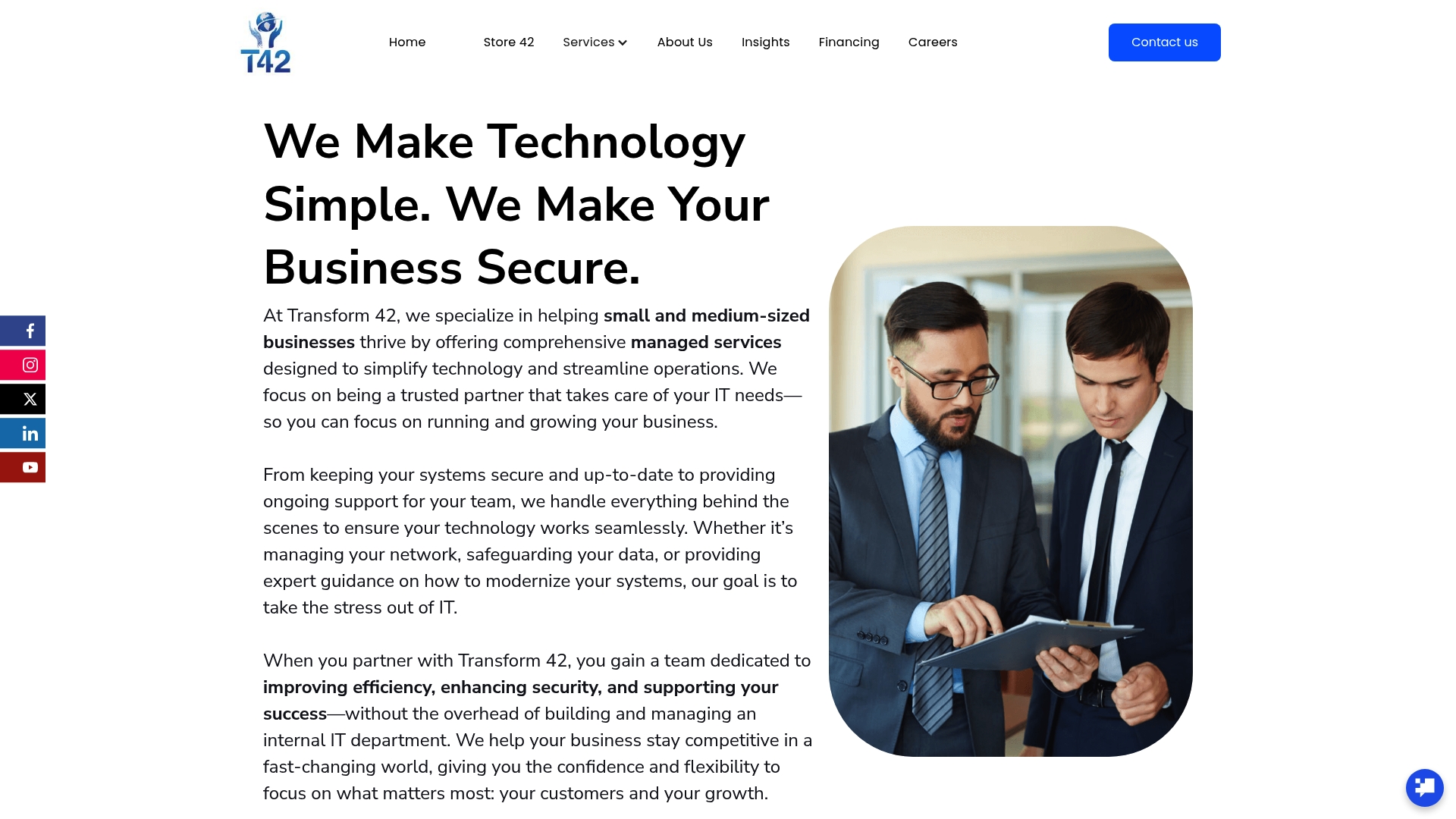Small businesses trying to grow often think the secret is just working harder or chasing every new trend. Yet, companies that conduct a serious internal assessment are actually 35 percent more likely to create winning strategies. Not what you hear in most business advice. The real edge comes from understanding your own operations better than anyone else and using that insight before any consultant comes through the door.
Quick Summary
TakeawayExplanationUnderstand your unique business needsConduct a thorough internal diagnostic to identify your operational challenges and areas for improvement.Define clear and measurable objectivesSet specific, actionable goals that align with your business strategy for better performance tracking.Conduct comprehensive market researchAnalyze customer behaviors, competitor strategies, and market trends to identify growth opportunities.Implement data-driven decision makingUse quantitative insights to refine strategies, minimizing risks and enhancing performance outcomes.Measure and evaluate outcomes regularlyContinuously track performance metrics to ensure strategies remain effective and responsive to market changes.
1: Understand Your Business Needs
Successful management consulting begins with a comprehensive understanding of your specific business requirements. Small businesses often struggle with identifying their core challenges and strategic objectives, which is why a systematic approach to assessment is critical.
The initial step involves conducting a thorough internal diagnostic of your organization’s current operational landscape. This means examining your existing processes, technological infrastructure, team dynamics, and overall performance metrics. You want to pinpoint precisely where inefficiencies emerge and what specific areas require strategic intervention.
Key aspects to evaluate during this diagnostic process include:
- Current workflow bottlenecks
- Technology integration gaps
- Resource allocation challenges
- Performance measurement mechanisms
- Competitive positioning
According to McKinsey & Company, businesses that conduct rigorous internal assessments are 35% more likely to develop effective strategic plans. This means moving beyond surface level observations and diving deep into the nuanced operational realities of your organization.
A structured approach involves mapping out your business processes, identifying pain points, and quantifying potential improvement areas. This isn’t about criticism but creating a realistic blueprint for targeted enhancement. By understanding your unique business needs, management consulting transforms from a generic service to a precision instrument for organizational growth.
Remember that every business is unique. What works for one organization might not translate directly to another. Your consulting strategy must be tailored, data driven, and aligned with your specific strategic vision and operational constraints.
2: Define Clear Objectives
Defining clear objectives is a fundamental cornerstone of effective management consulting for small businesses. Without precise, measurable goals, organizations risk drifting aimlessly, wasting resources and missing critical opportunities for strategic growth.
Successful objective setting requires a strategic and systematic approach. This means creating goals that are not just aspirational but concrete, actionable, and aligned with your broader business vision. Goals need to be specific enough to guide decision making yet flexible enough to adapt to changing business environments.
When crafting objectives, consider the following critical elements:
- Specificity and measurability
- Realistic and achievable targets
- Time bound milestones
- Alignment with overall business strategy
- Potential for iterative refinement
According to Harvard Business Review, organizations that establish clear, well defined objectives are 70% more likely to achieve significant performance improvements. This underscores the importance of not just setting goals, but setting the right kind of goals.
The process involves breaking down broad strategic intentions into granular, trackable metrics. This means transforming vague statements like “grow the business” into precise targets such as “increase quarterly revenue by 15% through targeted digital marketing campaigns”.
A robust objective setting framework should also incorporate mechanisms for regular review and adjustment. Business environments are dynamic, and your objectives must be living documents that can evolve with changing market conditions, technological shifts, and organizational capabilities.
Ultimately, clear objectives serve as a north star for your organization. They provide direction, motivate team members, facilitate focused resource allocation, and create a measurable pathway toward sustainable business growth.
3: Research Your Market and Competitors
Comprehensive market research represents a critical strategic tool for small businesses seeking to understand their competitive landscape and identify growth opportunities. This process goes far beyond casual observation, requiring a systematic and data driven approach to gathering actionable market intelligence.
Successful market research involves examining multiple dimensions of your business ecosystem. You need to develop a nuanced understanding of customer behaviors, emerging trends, potential market gaps, and the strategic positioning of your competitors.
Key areas to investigate during your market research include:
- Customer demographics and psychographics
- Industry growth trends
- Technological disruptions
- Competitive pricing strategies
- Unmet market needs
According to U.S. Small Business Administration, effective market research provides small businesses with critical insights that can significantly reduce operational risks and enhance strategic decision making.
The competitive analysis component requires a deep dive into your direct and indirect competitors. This means understanding not just their product offerings, but their strategic positioning, marketing approaches, and potential vulnerabilities. Look beyond surface level information. Analyze their online presence, customer reviews, marketing materials, and public financial reports.
Digital tools and platforms now make market research more accessible than ever. Utilize free and paid resources like industry reports, social media analytics, Google Trends, and specialized market research platforms to gather comprehensive data.
Remember that market research is not a one time activity but an ongoing process. Markets evolve rapidly, and staying informed requires continuous learning and adaptation. By maintaining a pulse on market dynamics, you position your business to anticipate changes, identify emerging opportunities, and make proactive strategic decisions.
4: Utilize Data-Driven Decision Making
Data-driven decision making transforms intuition and guesswork into a precise, strategic approach for small businesses. This methodology leverages quantitative insights to guide organizational strategies, reducing risk and maximizing potential performance outcomes.
In today’s complex business environment, relying solely on gut feelings is no longer sufficient. Successful organizations systematically collect, analyze, and interpret data across multiple dimensions of their operations. This approach enables more accurate predictions, targeted interventions, and measurable improvements.
Critical data points small businesses should track include:
- Customer acquisition costs
- Conversion rates
- Revenue per employee
- Customer satisfaction metrics
- Operational efficiency indicators
According to National Institutes of Health’s research, organizations implementing robust data-driven strategies experience significant improvements in operational effectiveness and strategic decision making.
Implementing data-driven decision making requires investing in appropriate technological infrastructure and analytical capabilities. This might involve utilizing cloud based analytics platforms, customer relationship management systems, or specialized business intelligence tools that transform raw data into actionable insights.
The process involves more than just collecting numbers. Effective data analysis requires understanding context, identifying meaningful patterns, and translating statistical information into strategic recommendations. Small businesses must develop the capability to not just gather data, but to interpret it accurately and apply insights strategically.
Successful data-driven organizations cultivate a culture that respects empirical evidence. This means encouraging team members to base discussions and recommendations on verifiable information rather than personal opinions or traditional assumptions. By creating an environment that values data as a strategic asset, businesses can make more informed, objective decisions that drive sustainable growth.
5: Foster Effective Communication
Effective communication serves as the fundamental backbone of successful management consulting for small businesses. It transcends simple information exchange, representing a strategic mechanism for building trust, alignment, and organizational momentum.
Communication is not just about speaking, but about creating understanding. This requires a multifaceted approach that considers both verbal and non-verbal communication channels, adapting strategies to different stakeholders and contexts.
Key communication principles for small businesses include:
- Transparency in all interactions
- Active listening techniques
- Clear and concise messaging
- Regular feedback mechanisms
- Consistent communication across platforms
According to Harvard University’s Division of Continuing Education, successful communication strategies involve building credibility, structuring compelling narratives, and understanding the nuanced dynamics of organizational interactions.
Small businesses must develop robust internal and external communication frameworks. This means creating structured communication protocols that ensure information flows smoothly between team members, departments, management, and external stakeholders like clients and partners.
Technology plays a critical role in modern communication strategies. Utilize collaborative platforms, project management tools, and communication software that enable real time interaction, document sharing, and transparent workflow tracking. These technologies can help bridge communication gaps and create more integrated, responsive organizational environments.
Effective communication also requires emotional intelligence. Understanding different communication styles, recognizing potential misunderstandings, and developing empathy are crucial skills. Leaders must model clear, respectful communication and create an organizational culture that values open dialogue, constructive feedback, and continuous learning.
6: Implement Agile Strategies
Agile strategies represent a transformative approach for small businesses seeking to navigate complex and rapidly changing business environments. Unlike traditional rigid management frameworks, agile methodologies prioritize flexibility, continuous improvement, and rapid adaptation.
The core philosophy of agile management is about breaking down complex projects into smaller, manageable iterations. This approach allows businesses to respond quickly to market changes, customer feedback, and emerging opportunities with unprecedented speed and precision.
Critical components of implementing agile strategies include:
- Regular project iterations
- Continuous feedback loops
- Cross functional team collaboration
- Rapid prototyping
- Performance measurement and adjustment
According to Harvard Business Review, agile strategies are not exclusive to large corporations but can provide small businesses with a significant competitive advantage by enabling faster decision making and more responsive organizational structures.
Successful agile implementation requires a cultural shift, moving away from hierarchical, top down management towards more collaborative, transparent working environments. This means empowering team members to make decisions, encouraging experimentation, and creating systems that allow quick pivots when strategies are not producing desired results.
Technology plays a crucial role in supporting agile methodologies. Utilize project management tools, collaborative platforms, and real time communication technologies that facilitate rapid information sharing and collective problem solving. These digital solutions help teams stay aligned, track progress, and maintain momentum across complex projects.
Remember that agile is not a one size fits all solution. Each business must adapt agile principles to its unique context, organizational culture, and strategic objectives. The key is creating a flexible framework that allows continuous learning, rapid iteration, and strategic responsiveness.
7: Measure and Evaluate Outcomes
Measuring and evaluating outcomes is the critical final step in management consulting that transforms strategic planning into tangible business performance. Without systematic measurement, businesses operate in a state of uncertainty, unable to validate their strategies or understand their true organizational progress.
Outcome measurement goes beyond simple numerical tracking. It involves creating a comprehensive framework that captures both quantitative and qualitative insights about organizational performance, providing a holistic view of business effectiveness.
Key performance indicators small businesses should consistently track include:
- Revenue growth rates
- Customer acquisition costs
- Employee productivity metrics
- Customer satisfaction scores
- Operational efficiency indicators
According to Journal of Innovation & Knowledge, systematic performance measurement supports organizational sustainability and provides critical feedback for strategic planning and future decision making.
Establishing a robust evaluation mechanism requires developing clear, measurable objectives from the outset. This means creating specific, achievable goals that can be objectively assessed using predefined metrics. Businesses must invest in analytics tools and platforms that enable real time performance tracking and provide actionable insights.
Effective outcome evaluation is not a one time activity but a continuous process. Regular review sessions allow businesses to identify trends, recognize emerging opportunities, and quickly address potential performance gaps. This iterative approach ensures that strategies remain dynamic and responsive to changing market conditions.
Ultimately, measuring outcomes is about creating a culture of accountability and continuous improvement. By consistently tracking performance, small businesses can make data driven decisions, validate their strategic investments, and maintain a competitive edge in an increasingly complex business landscape.
Below is a comprehensive table summarizing the 7 essential management consulting tips for small businesses discussed throughout the article.
TipKey Actions/FocusMain BenefitUnderstand Your Business NeedsConduct an internal diagnostic to identify challenges and improvement areasTailored, data-driven consulting approach for targeted solutionsDefine Clear ObjectivesSet specific, measurable, actionable goals aligned with business strategyEnables effective performance tracking and resource allocationResearch Market and CompetitorsAnalyze customer, competitor, and market data using systematic researchIdentifies opportunities, reduces risks, and informs key decisionsUtilize Data-Driven Decision MakingCollect, analyze, and apply quantitative insights throughout operationsEnhances accuracy, reduces guesswork, and improves performanceFoster Effective CommunicationUse transparent, active, and consistent communication internally and externallyBuilds trust, alignment, and organizational momentumImplement Agile StrategiesEmploy rapid iteration, feedback loops, and collaborative, adaptive workflowsEnables flexibility, faster adaptation, and continuous improvementMeasure and Evaluate OutcomesTrack KPIs and review both quantitative and qualitative results regularlyEnsures accountability, strategic validation, and sustained growth
Take Control of Your Small Business Growth
Are you struggling to translate strategic goals into measurable business outcomes? From internal diagnostics to outcome evaluation, the article addresses the challenge of moving beyond inefficient processes and vague objectives. Many small businesses get stuck with bottlenecks, unclear strategies, and missed market opportunities. Our team at Transform 42 Inc. understands that you need actionable, data-driven solutions tailored to your unique business needs.

Experience how smooth communication, agile strategies, and technology-driven management consulting can put you ahead of your competitors. Act now to transform bottlenecks into breakthroughs and unlock the full value of your business data. Discover more and connect with the right solutions by visiting our website. Make the move toward clear objectives and measurable growth today.
Frequently Asked Questions
What are the key components of effective management consulting for small businesses?
Effective management consulting for small businesses includes understanding business needs, defining clear objectives, conducting market research, utilizing data-driven decision making, fostering effective communication, implementing agile strategies, and measuring and evaluating outcomes.
How can small businesses define clear objectives to enhance their consulting strategy?
Small businesses should set specific, measurable, achievable, time-bound (SMART) objectives that align with their overall business strategy. Regular reviews and adjustments are also essential to adapt to changing conditions.
What role does market research play in management consulting for small businesses?
Market research helps small businesses understand their competitive landscape, customer behaviors, and emerging market trends, allowing them to make informed strategic decisions and identify growth opportunities.
Why is data-driven decision making important in small business management consulting?
Data-driven decision making replaces guesswork with precise, quantifiable insights, leading to better predictions, targeted interventions, and measurable improvements in performance and operational effectiveness.





